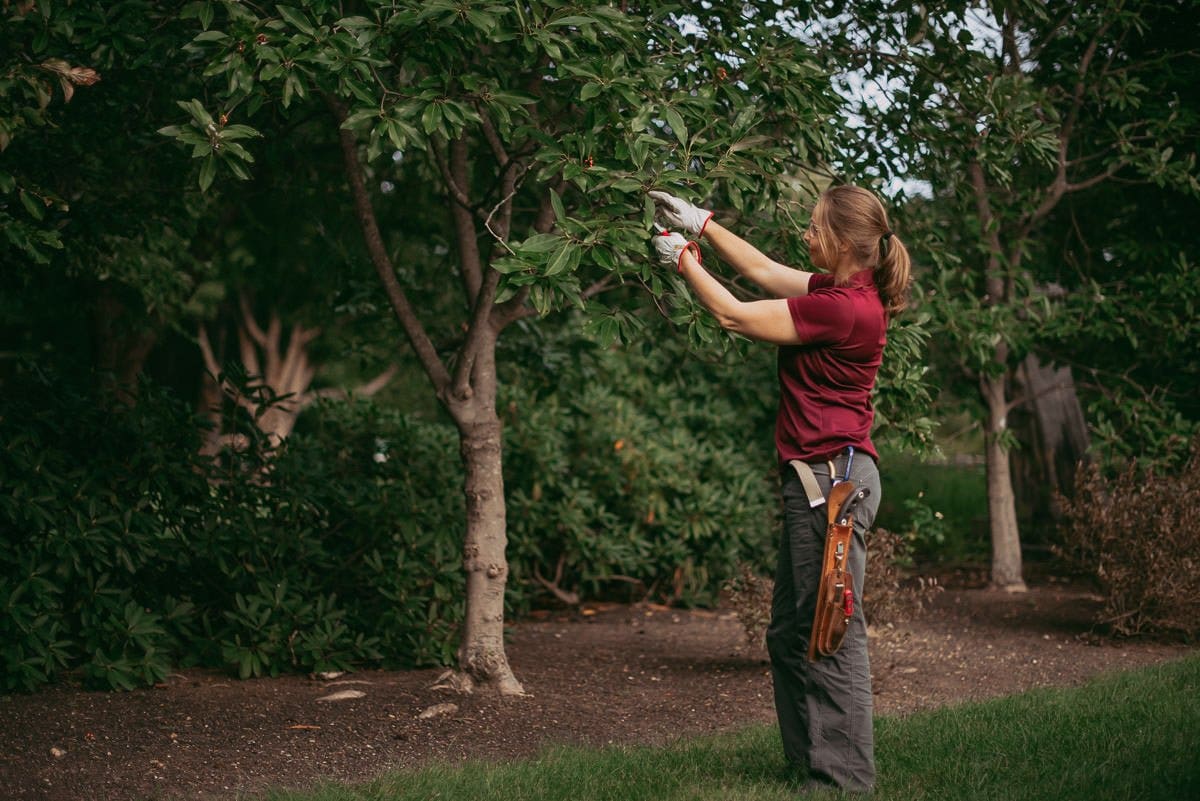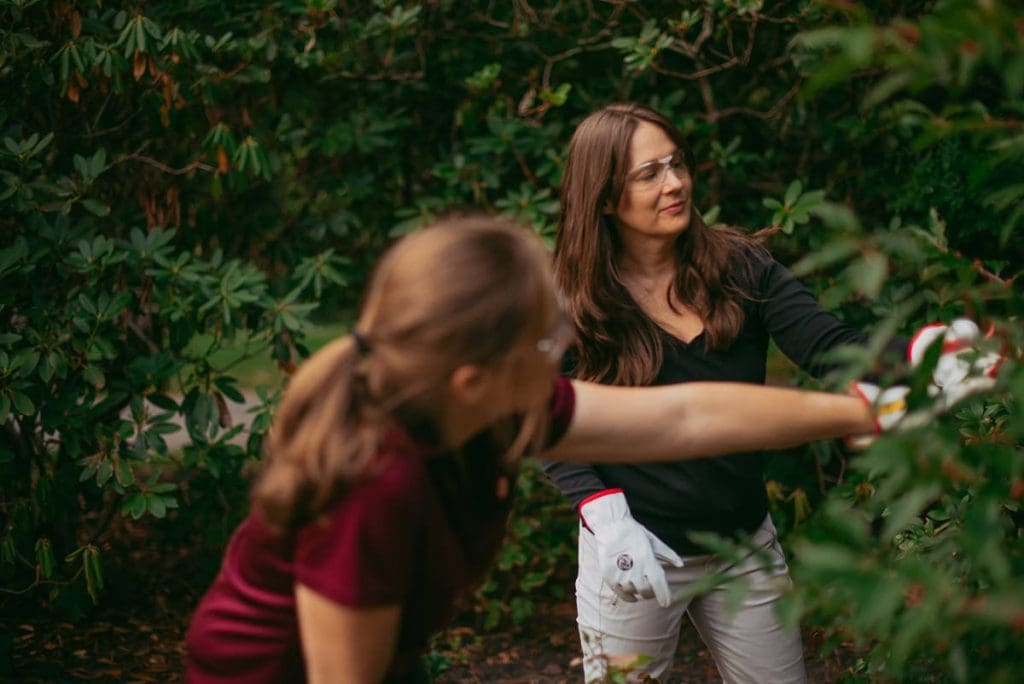
If you’re an experienced landscape professional, it’s easy to think once you’ve mastered a technique like pruning, there’s no need to revisit the matter. However, this mindset can cause you to hold on to obsolete pruning practices.
“We’re working with living plants, which are dynamic organisms,” says Jen Kettell, owner of Radiant Leaf Consulting and an ISA Certified Arborist. “Everything changes. Even if the fundamentals of pruning don’t change, the way we apply those practices may change because something changes in the environment – like a new disease in our region.”
An example of this is fire blight caused by Erwinia amylovora. While it is not a new disease, it once was, as for about 100 years, its cause was unknown. It was eventually identified as a bacterial disease and pruning is one of the most effective ways to manage fire blight.
Yet Kettell says the devil is in the details as how landscapers prune host plants in the Rosaceae can either exacerbate or slow fire blight’s spread.
“In this case, knowing only pruning basics can really get us in trouble,” she says. “We should continue to sharpen our skills…well, forever! There’s always something new in our living landscapes that we need to learn about, problem-solve, and address.”
Why Continual Training Matters
Kettell says one of the most significant changes to pruning principles was in the 1960s following Alex Shigo’s research on selective pruning and Compartmentalization of Decay in Trees (CODIT). Current pruning techniques still build on Shigo’s work today.

“Most recently, our customers’ knowledge about garden care has greatly expanded,” Kettell says. “More and more clients expect selective pruning for their trees and shrubs — they don’t want everything hedged. For landscape companies, this expectation requires more education for their employees. This often means a shift from teaching new hires on-the-job to investing in formal pruning training programs and certifications.”
Also pruning performance standards change. The ANSI A300, Part 1 is considered the model for best pruning practices and every five years or so the Standards Committee updates the standard to reflect new research and knowledge in arboriculture.
Kettell says in addition to refreshing your technical landscape skills, you should stay on top of the science that informs how you care for landscape trees and shrubs.
“Our work is truly multi-disciplinary,” Kettell says. “It’s important to be aware of common insect pests/diseases to their region (and the ones that may be one the way!), new insect/disease resistant cultivars, changing weather patterns, and invasive species.”
Depending on how much of your workload is pruning will determine how frequently you should brush up on the latest training.
“If they’re primary turf pros who spend only a month or two pruning each year, then frequent annual training will be important because they’re not practicing as much,” she says. “For folks who are pruning every week, I’d recommend a refresher course every couple of years.”
Bad Habits to Avoid
One of the reasons you can slip into possible bad pruning practices is due to tremendous production pressure and demand for landscape services.
“It’s really easy to start taking shortcuts – or what I callperceived shortcuts – in order to achieve a ‘tidy’ looking landscape,” Kettell says. “When we brush up on our skills, we’re reminded of the finer points that we may have forgotten. The best training sessions also will remind us why we were initially drawn to landscaping and horticulture – they’re energizing, fun, and inspiring!”
Common mistakes include making pruning cuts without regard to the branch collar, where they are too deep or too far from the collar. Another is abandoning the long-term strategy of structural pruning in favor of the short-term “rewards” of heading any and all species.
Kettell says while you don’t want to slip into these bad habits, you also don’t want to slip into bad habits that affect how you take care of yourself.
“We work in a trade that requires knowledge, and physical skill,” she says. “When leading training classes, I’ll often gesture towards my left arm and say that it’s my moneymaker! Wear your PPE – safety glasses and gloves are bare minimum for using hand saws and pruners on the ground. When using a chainsaw – add on chainsaw pants and head/ear protection. In my work training both pros and homeowners, not wearing PPE is the bad habit I see most often. Without protective equipment, we expose ourselves to unnecessary and potentially life-threatening injuries.”
Refer to the ANSI Z133 Safety Standard for a complete list of required PPE.

